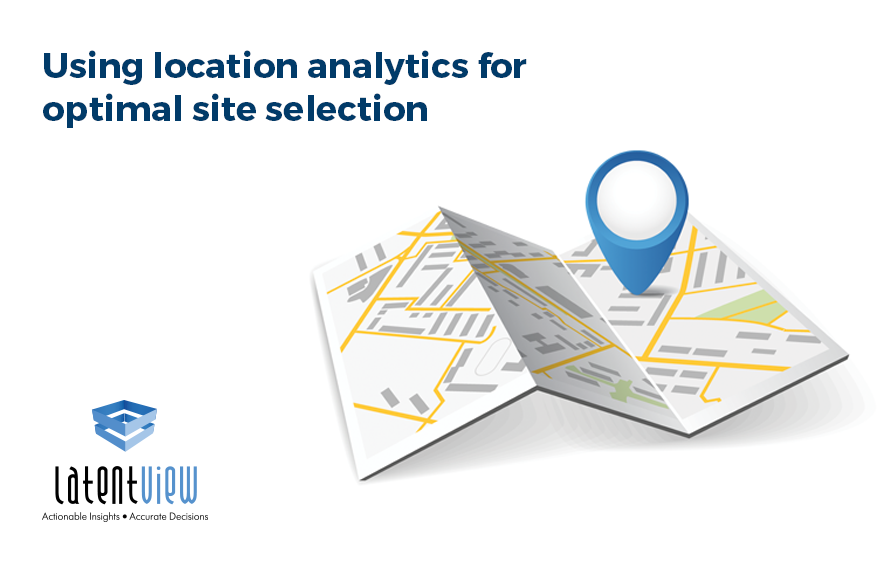Identifying the right location to set up a store forms a key part of any retailer’s core strategy. Selecting the right location is not only crucial for profitability, but can also determine whether the business can successfully thrive. Analyzing transactions, facilities, and asset data along with geographic data can reveal valuable insights that can help the retailer choose the right location while setting up a business. In a study conducted by Dresner Advisory Services, titled ‘2018 Location Intelligence Market Study,’ it was found that 66% of enterprises ranked location intelligence as being critical or important to their ongoing revenue growth strategies. In addition to that, R&D, sales, and marketing placed highest importance on location intelligence for 2018.
Location analytics is already being considered the next wave in the evolution of business intelligence with the location analytics market expected to be worth $16.34 billion by 2021.
What is Location Analytics?
Location analytics uses data from disparate sources to understand the different geographical and spatial factors and uses statistical techniques to predict the best location for each store. By using location analytics, retailers can stay ahead of the curve and gain an upper hand over their competitors.
The data used to mine insights can include internal sales data, demographic details and profiles of the population. Other macroeconomic indicators such as purchasing power of the population, economic growth index, and cost involved in setting up new stores, and so on are also used in the process.
Common example include Wendy’s, a popular burger chain in the US, who leveraged location analytics to identify new store locations and save nearly $750,000 in the process. In another case, an international airport based in the US used location analytics for faster customer check-ins.
Factors governing selection of location
- Connectivity and ease of traffic flow – stores must be easily accessible by customers and must be connected to different transit modes. While flow of traffic must be adequate to ensure high visibility, excessive traffic can crowd out the commercial space
- Parking facility – availability of parking at the store or in the vicinity is one the crucial factors that determine the footfalls to a store. If the customer finds it a hassle to find parking, it is likely to discourage them from visiting the store
- Cost-effectiveness – identifying locations strategically can help bring down operating costs such as rent significantly while maximizing the potential for sales
- Presence of competitors – understanding the market share available in a given location is important so as to not be drowned out by excessive competition. This can lead to a cannibalization of sales as nearby competitors can eat into your market share
- Culture of the local population – understanding the local milieu can help retailers gauge the needs of the local population and tailor-make their offerings accordingly
- Economic power of the local population – analyzing the purchasing power of the local population is important to understand whether the products offered by the retailer can find a stable market in a location. For example, offering luxury goods in a location that mostly houses residents from middle-income backgrounds may not drive sustainable sales
Forecasting sales
The following steps are undertaken to identify the best location for each store:
-
First, a wide variety of predictive variables that can capture various demographic, economic and location details at a zip code level is leveraged while developing forecasting solutions. Some indicative variables are:
- Demographic data such as the total population by zip code, gender, and occupancy status
- Economic factors such as sales figures and house price index
- Other data such as geographical or terrain information and competitor location
- Second, this data is used to generate forecasts of store sales at the zip code level, the forecasts can be used to estimate potential revenue for each location
- Third, optimal allocation of locations is done by running through combinations of store selections at a zip code level to maximize profitability, while incorporating area level constraints
- Finally, identifying a list of the stores that are best suited for each zip code
Forecasting sales
The second step involves utilizing appropriate generating sales forecast methods for each zip code. This is done by using demographic and economic data of a given location. Regression, demand forecasting, and clustering techniques can be effectively used to:
- Understand latent factors that drive sales
- Forecast 12/24-month sales while also capturing the effect of cannibalization
- Demand forecasts at a product/segment level
- Generate similarity scores for store locations
By using suitable sales forecast methodising techniques and algorithms, regression models can be built to forecast sales for existing stores at a more granular level. These will allow for better planning by providing week/month-level forecast. Stores can also be clustered into broader segments based on similarity scores that can be generated using a wide range of store characteristics. This can enable generating forecasts at a segment level as well. For new locations, forecasts can be generated by using the demand for existing stores that are similar.
Accuracy of the forecast models can be assessed based on the following metrics:
- Mean Absolute Percentage Error (MAPE)
- Root Mean Squared Error(RMSE)
- Adjusted R square
The model that fits best for the parameters listed above will be used and will be fine-tuned for addition of any new data.
Store-level optimization
The third step involves optimizing to identify locations that can maximize profits. The optimizer conducts a search across various combinations of store placements and arrives at an ideal solution. Important factors to be considered while optimizing are budget available for the store and the market potential in that specific location.
The optimizer performs the following functions to arrive at an ideal solution:
- Iterate through probable store placements at a zip code level
- Minimize cannibalization of sales using underlying regression model
- Identify the most profitable zip codes
| Zip Code | Revenue Forecast | Set-Up Cost | Profitability | Store Allocation Decision Variable |
|---|---|---|---|---|
| 32003 | $1,654,978 | $293,007 | $1,361,971 | 0 |
| 32004 | $1,775,791 | $200,492 | $1,575,299 | 1 |
| 32005 | $1,961,709 | $291,068 | $1,670,641 | 1 |
| 32006 | $1,469,947 | $242,968 | $1,226,979 | 0 |
| 32007 | $1,418,890 | $289,026 | $1,129,864 | 0 |
Table 1: Illustrative results from Store Optimizer
In the table above, the optimizer loops through all possible zip code store combinations and attempts to maximize profitability (which is obtained as the difference between the forecasted revenue and set-up cost for each zip code), while deciding whether to allocate the store to a particular location.
Advantages and limitations of location analytics
There are several benefits of using location analytics – whether it is setting up a new business or optimizing an existing one. It can forecast the performance of existing stores as well as for new stores. It can also help in identifying locations with high market potential. In addition to helping retailers understand whether a location will be successful, it helps them get an idea of key drivers of success to their business growth.
There are some limitations, however, that must be factored while using location analytics. It may not be possible for the model to account for all the growth drivers. For example, a model might give a high score to a site located next to a highway based on visibility and accessibility but the sales from that store may not actually match with the actual sales in that store.
Similarly, a competitor’s entry in the market right after a store is set up might pull down revenue forecasts for that store since the competitor’s entry is not accounted for by the model. These limitations can be overcome by regularly updating the model with the latest data on key variables.
Using location analytics to create a market area profile minimizes your risks of failure. Location analytics can help you integrate your business into the needs and shopping habits of an area, can give you a competitive advantage and ultimately prevent costly mistakes. To understand how LatentView Analytics can help with spatial and competitive analysis, please write into: marketing@latentview.com










